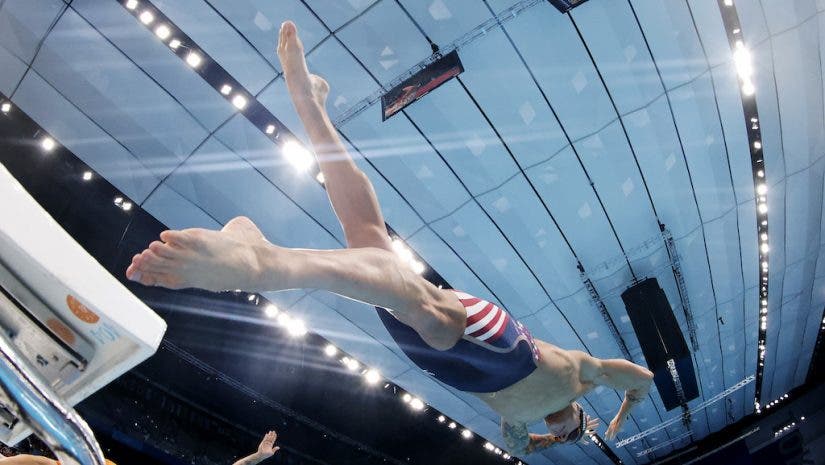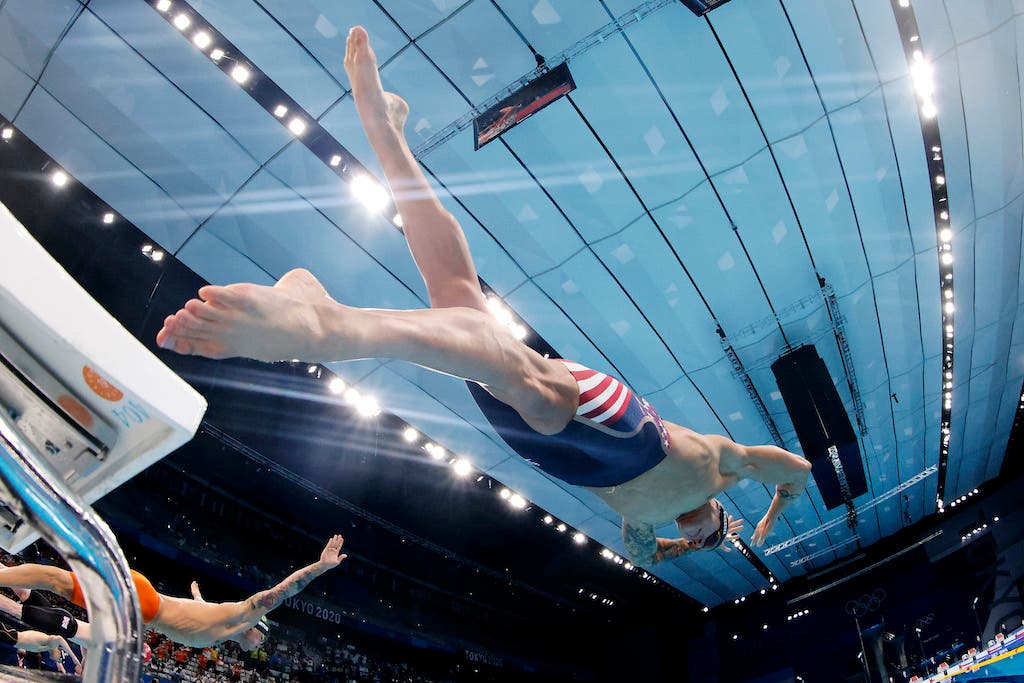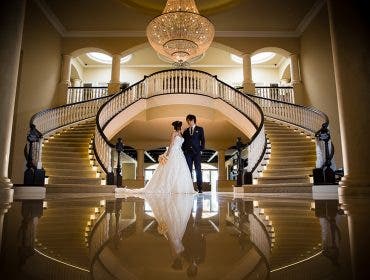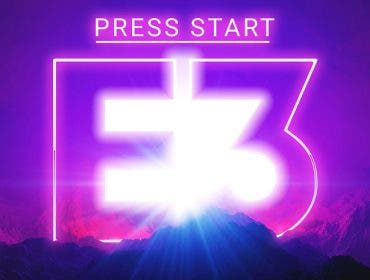As you’re probably aware, the 2020 Olympics Games in Tokyo were cancelled for a year and almost did not happen in 2021. Due to the rising surge of COVID-19 and lack of rollout of vaccinations in Japan, the country was in a state of emergency and was on full lockdown during the games. No fans were allowed to attend the competition — not even the athletes’ families. It was a bit strange when a world record fell or a big race finished and you didn’t hear a deafening roar of the crowd. The events were held in nearly empty stadiums across Tokyo and beyond. In my 13 Games that I have covered as an Olympics photographer with Getty, this one was like no other.
I worked with a team of five Getty Images photographers, four of which were dedicated to aquatics with me. There was one rotating photographer who would come in every day and help out where needed, and one Technician. Between us, we were expected to cover all of the aquatic sports — including swimming, diving, synchronized swimming, and water polo — across two venues.
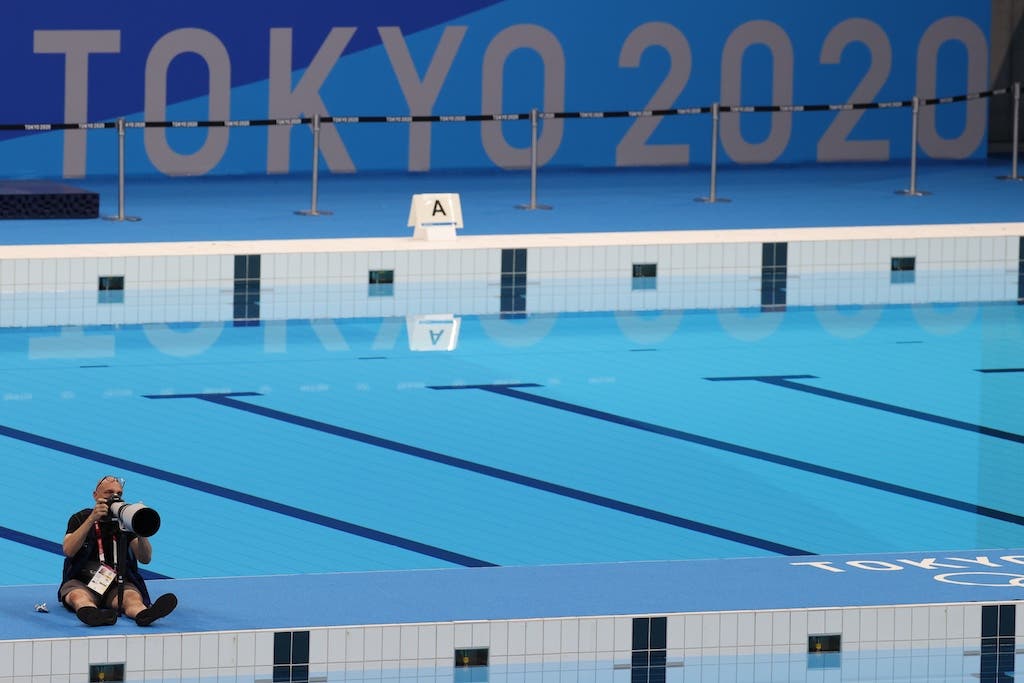
Traveling to Tokyo
There were strict guidelines for everyone working these Olympic Games. Two weeks before arriving in Tokyo, we had to monitor and log our health and temperature on an app called Ochoa. We had to show proof of a negative PCR test twice within 96 hours, then 72 hours, before leaving the United States to enter Japan.
Upon arrival into Tokyo, we were moved through a series of checkpoints throughout the airport. Each group of officials and volunteers would ask the same questions, look at your paperwork, and move you along. We were subjected to taking more PCR tests at the airport. We had to await the results there and if we tested negative, then we could move on and get our media credentials validated, collect our luggage, clear customs, and be transported to our hotels. The process took anywhere from two to eight hours, depending on what airport or time of day you arrived. For me, it took 2 hours and 20 minutes and I consider myself one of the lucky ones. I quickly realized that being an Olympics photographer at the Tokyo games would require an inordinate amount of patience.
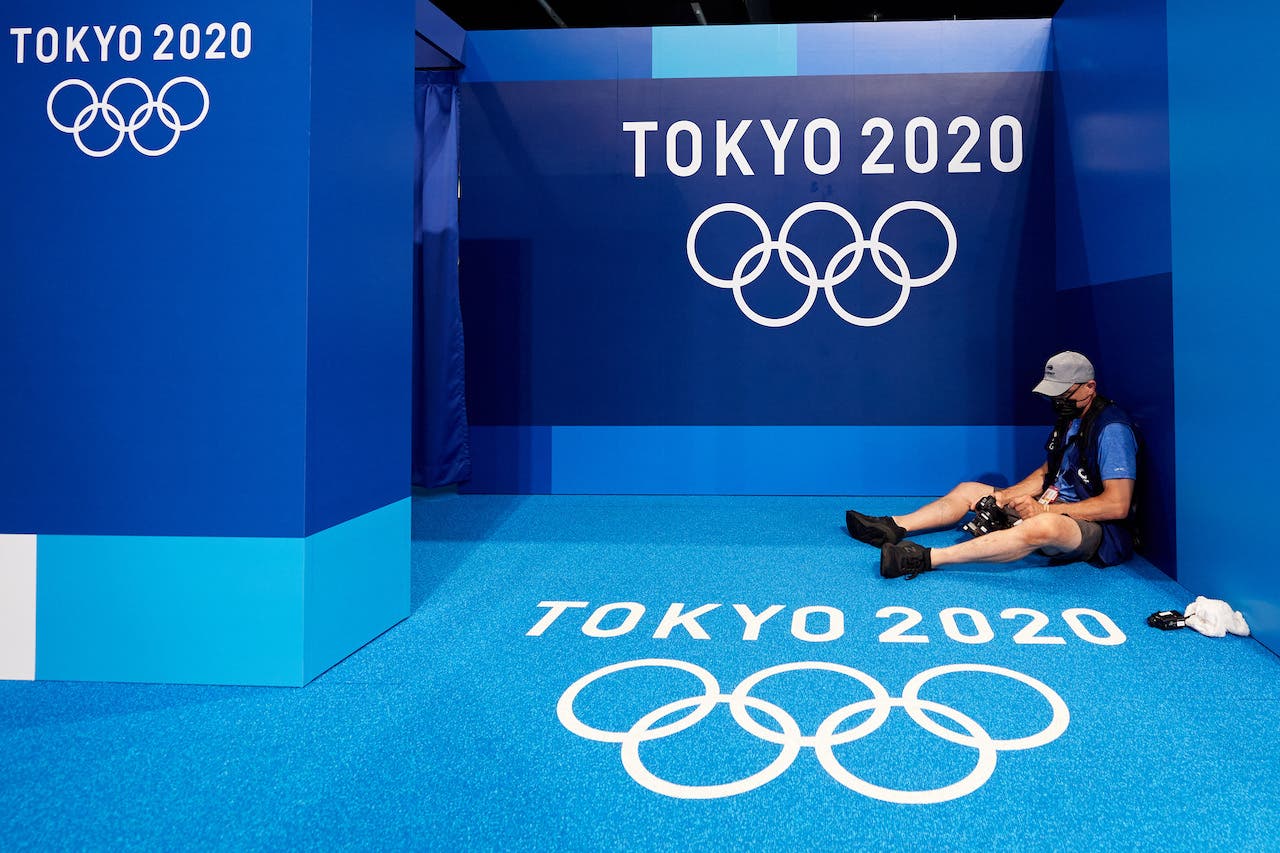
Protocol while in Tokyo
I knew this was going to be a situation where you just had to roll with it. For the first 14 days in Japan, you were allowed to go only from your hotel to the venues, including the main press center. I was to submit a PCR saliva test every single day I was in Japan for 24 days. You were not allowed to go anywhere else including restaurants, shopping in town, trains, or buses.
I ate a prepared breakfast every morning in my hotel in a sanitized room that checked my temperature upon arrival. I also had to serve myself while wearing gloves and a mask. We were seated alone and separated by plexiglass at each table. I got the rest of my food from a local convenience store for the first 14 days until I cleared quarantine.
Working under these conditions was difficult, but I knew we were all experiencing the same thing. Many of us in the press realized the severity of the situation so, for the most part, everyone cooperated and followed the rules. After I cleared quarantine, I was able to move freely. I managed to get three meals in total at restaurants throughout my stay in Tokyo.
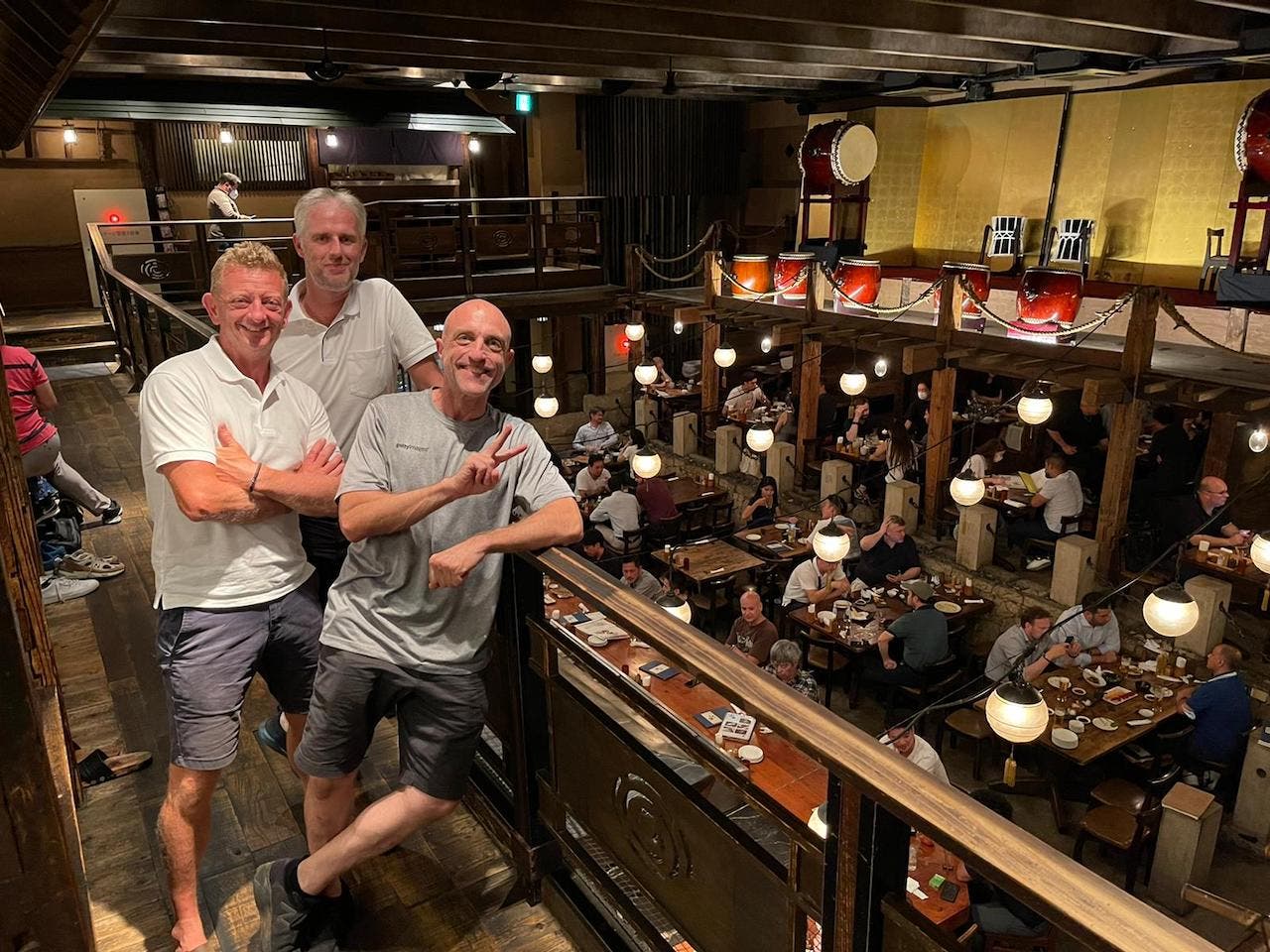
Covering The Olympic Games
Once we got through all these hurdles, we then had to concentrate on covering the games themselves. I worked with an awesome team of photographers including Clive Rose, Tom Pennington, and Maddie Meyer. We sat down before the games started and ironed out the schedule between us. We fairly rotated shooting positions and different sports each day. There was a finish line position to catch reaction shots as athletes finished their race. There was a roaming photographer position where the photographer could move up and down the pool and work head-on to the swimmers. We also had a fixed position across the pool halfway down for the photographer to shoot action and reaction shots. There were two overhead positions in the stands. One was head-on looking back at the finish line across the pool and the other was overhead side-on looking at the finish line.
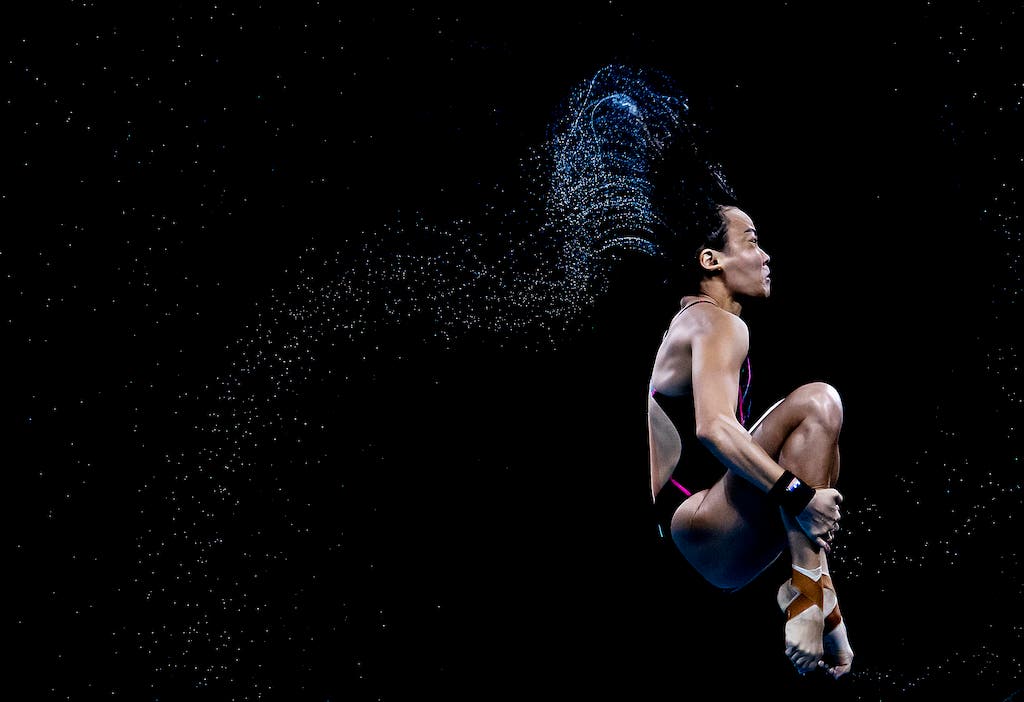
While all the sports were important to shoot, the marquee event was the nine days of swimming ahead of us. It was challenging as we worked with the photo managers and venue people navigating the rules and working safely. We had to steer clear of the swimmers and give them and the officials their space to work while doing our job. We had a pool deck roaming position that could move up and down the pool during competition. The photographer worked one side of the pool moving where they wanted and around to the head-on position looking at the swimmers as they swam towards you. All the other positions were fixed in certain areas of the pool. Each position carried a certain amount of photographers and there were many, but not as much as past Olympics.
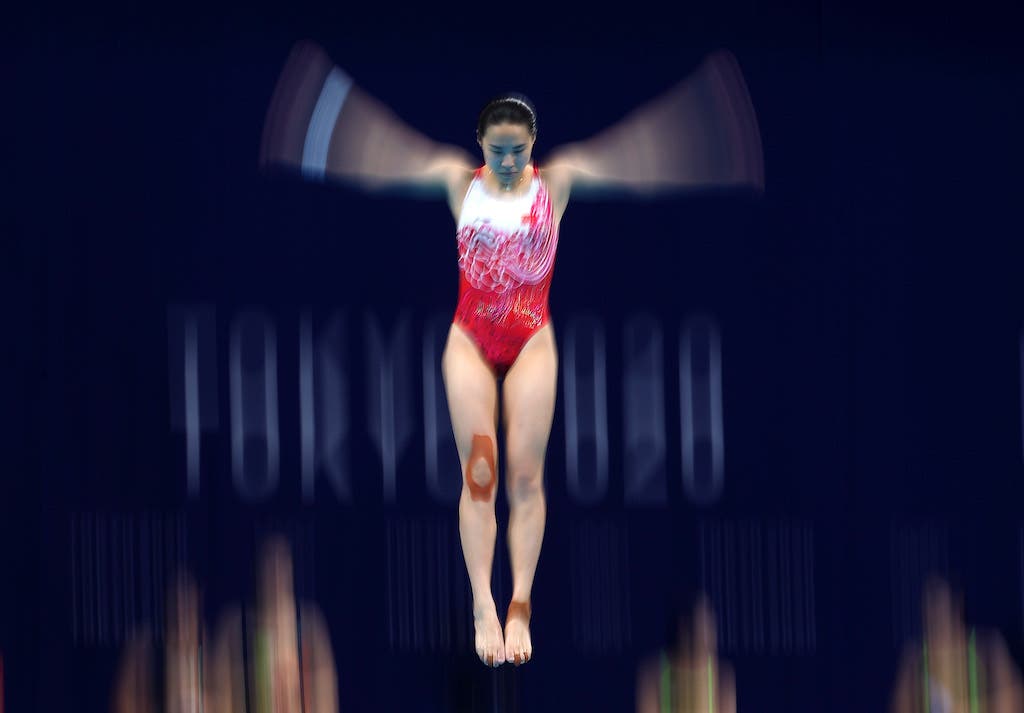
Once the competition started, it was like shooting every other Olympics, except we had masks on and there were no fans. It was nonstop from early morning swim finals, then diving in the afternoon, and then swim heats at night. There was water polo going on throughout the day as well. When the swimming finished, the pool was replaced by synchronized swimming and more diving. When you photographing a sport like synchronized swimming or diving, you are solely concentrated on the athletes’ performance. You are looking for brief moments of action followed by meticulous and dynamic moves by the athletes. In swimming, it is much more chaotic. There is water churning everywhere and athletes all over the pool swimming and you have to look around to what’s happening.
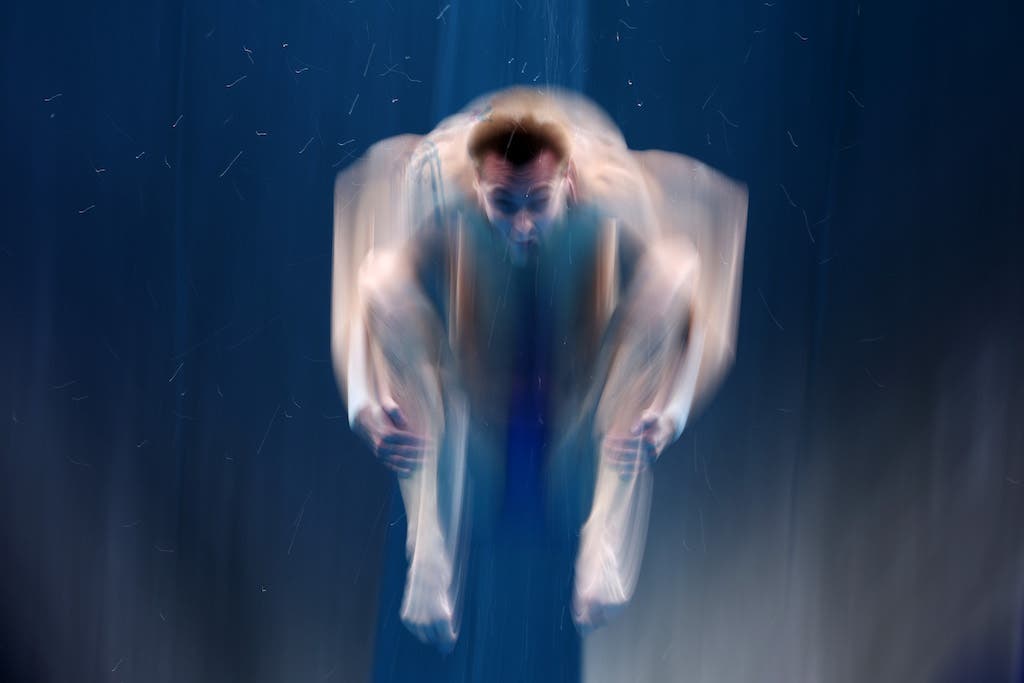
Working Underwater
The most intense part of the Olympics was making sure we got everything right during the swimming events. It was a big deal and we wanted to do well every day. We would also be running an underwater camera during the duration of the Olympics. The underwater camera is placed in position way before the athletes ever get in the pool. We install them ourselves with scuba gear or we are provided divers for the Olympics. The camera is placed in water-proof housing. The camera is connected via a cable run outside the pool to our position. It is then connected to a computer where we can operate the camera via live view to rotate, zoom, and focus the camera.
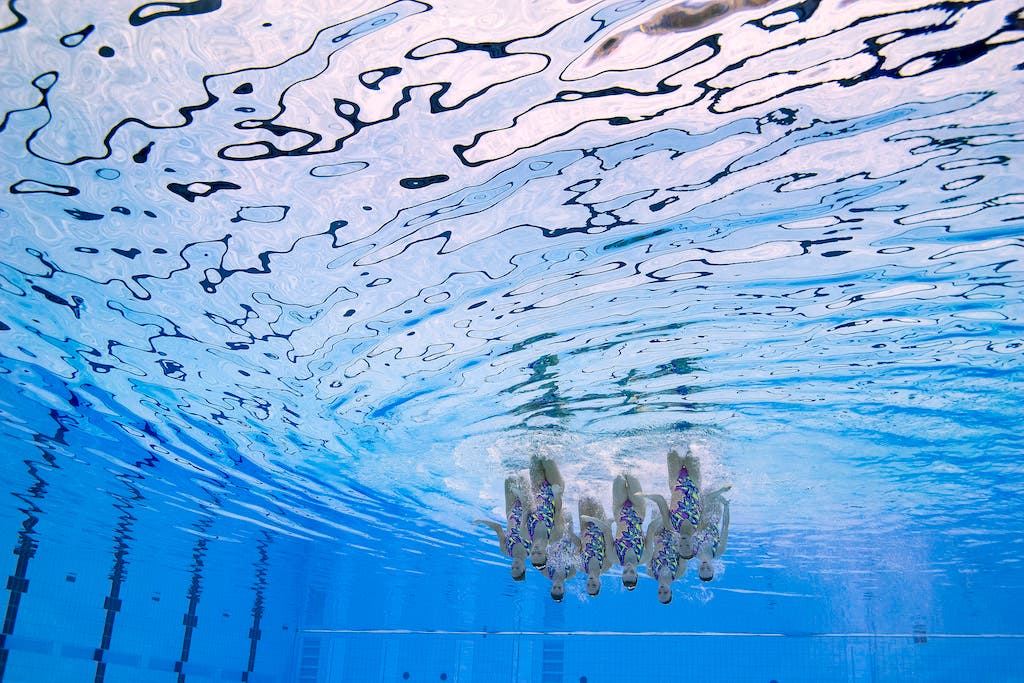
Whether I was working the underwater camera, the pool deck, or a fixed position, there were different responsibilities to cover. Things got a bit easier as the Olympics progressed and when swimming finished. By then, we had gotten into a routine and attacked each day with all of our effort.
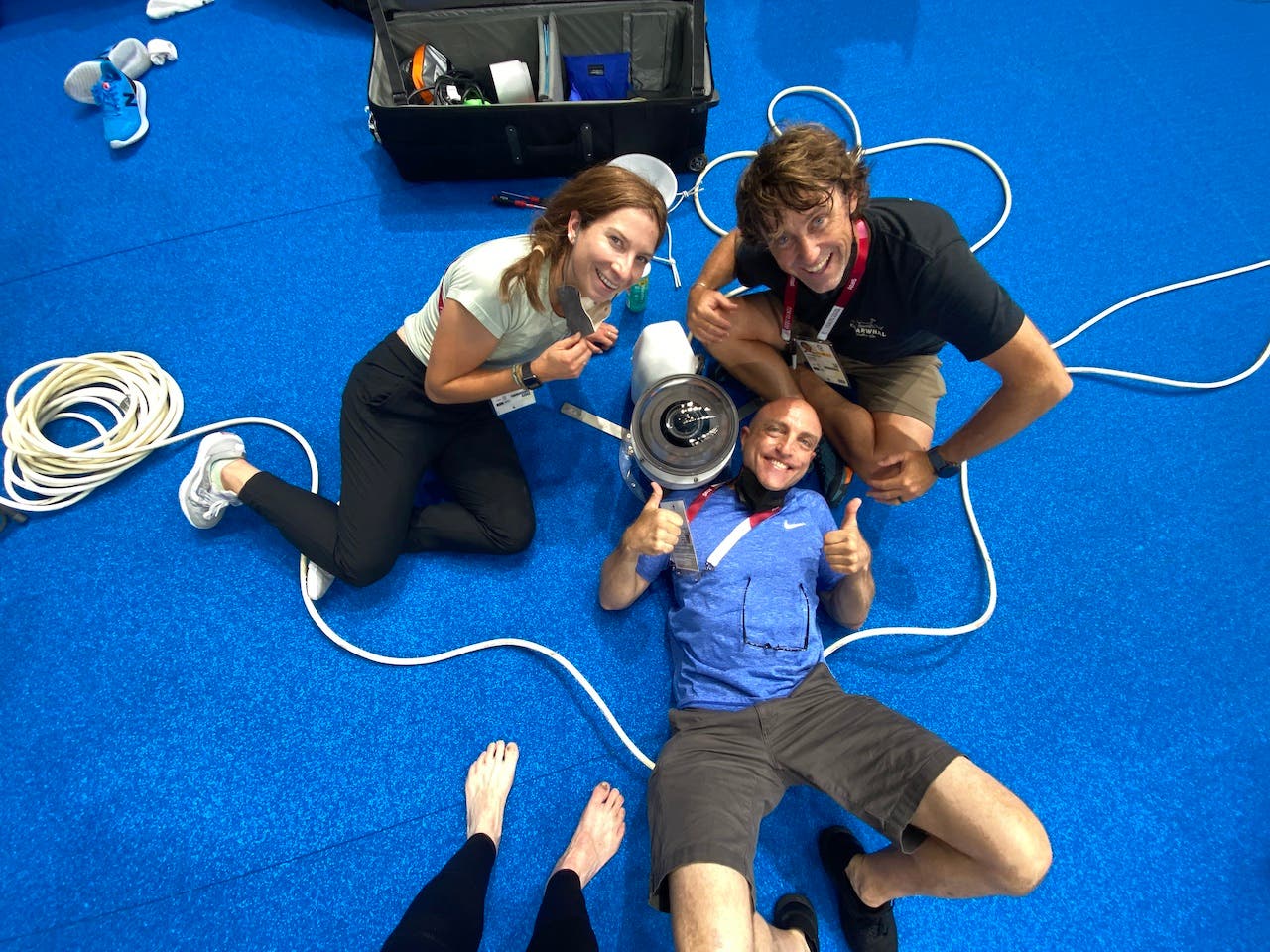
Everything in Between
We left our hotel at 7 a.m. every day and did not get back until 11:30 p.m. or later. There were media buses that ran to and from the venues. There were also taxis that we used to get to the stadiums. My team tried to keep things light and make each other laugh on bus rides to and from the stadiums. All the while, we tried to produce images that told the story of the games, to be creative with our imagery, and satisfy our clients’ photo needs for each country. We transmitted our images by connecting our cameras to dedicated ethernet lines which were placed in positions all over the venues.
Our images were sent to our editors which were transmitting from our office in the main press center or remotely from their homes around the world. They would receive the images. They would choose the best ones. The images would be captioned, edited, and sent to our clients on the wire within minutes (and sometimes seconds) of the live action.
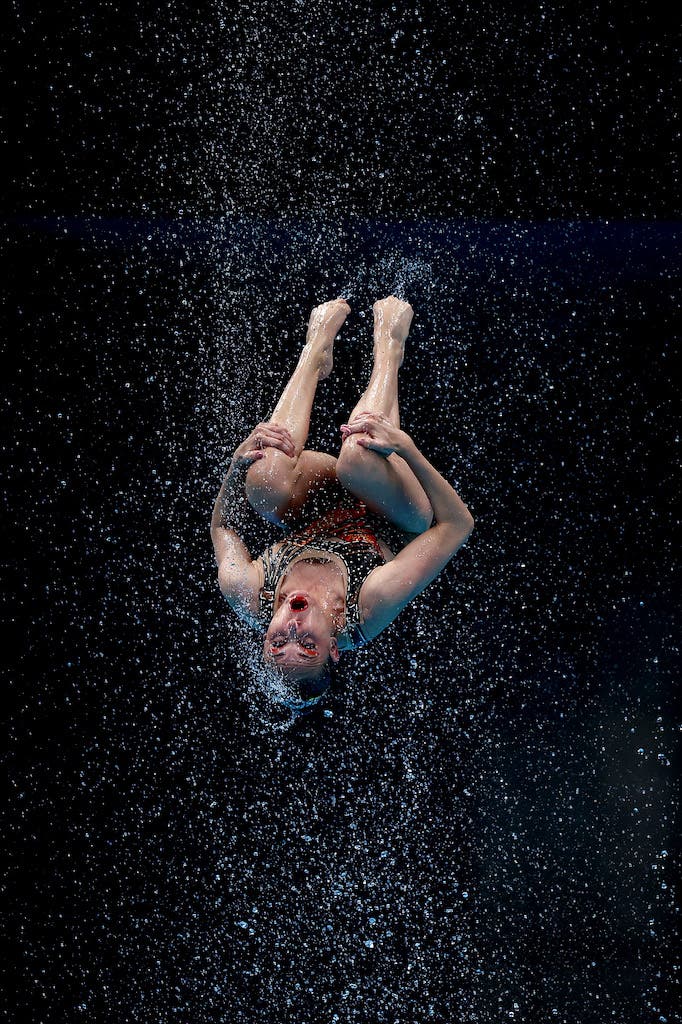
Finishing Up
When the games were over that last day, I really felt the exhaustion. It hit me all at once. I was happy to get some rest the next day before flying back to the States. I was finally able to get out a bit and see the city. We left Tokyo two days after the final event so we could pack all the gear and rest for a day. We had to test negative for Covid and show proof at the airport before flying home. If you tested positive, then you were stuck in Tokyo for another 14 days of quarantine.
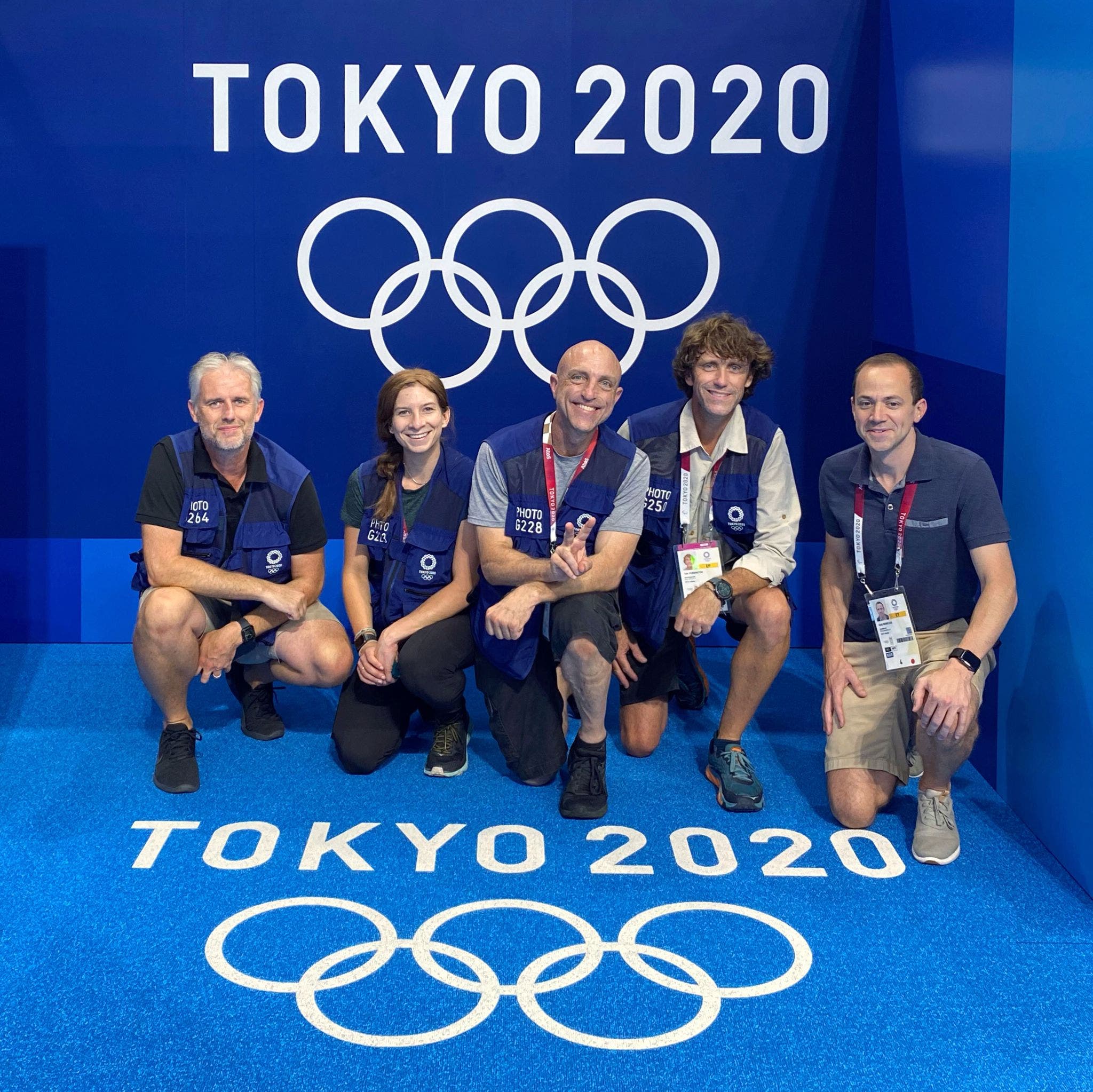
Besides having the opportunity to photograph the greatest athletes in the world, I really enjoy the Olympics because I get to work with some of the greatest sport photographers in the world as well. Many of them happen to work at Getty Images. They live all over the world and the Olympics is a wonderful time to get reacquainted with Olympics photographers and editors you only see every few years. That is what the Olympics is all about for a photographer. The Winter Olympics in Beijing is just around the corner, and I plan on doing it all over again.
If you’re interested to learn more about photographing the Tokyo Olympics, visit photographer Jamie Squire’s recent article about what he has learned from the experience.
